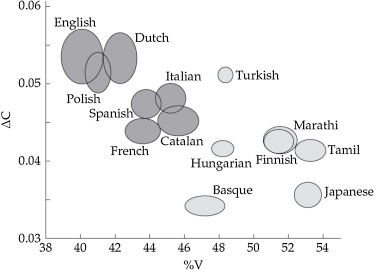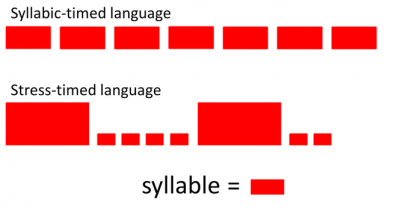|
A good friend of mine is Japanese-American. Born in the United States to parents who emigrated from Japan, she is fluent in both English and Japanese. On the few occasions when I say a word in Japanese, I can see my friend cringing! Arigato, Kyoto, Tempura. Her face says it all: my Japanese pronunciation is pretty awful. Why is that? Because when I pronounce the few Japanese words I know, my brain is relying on the sounds and rhythms of my first language: English. Broca’s area—the part of our brain that is responsible for speech production—gets less flexible as we age. Unfortunately, for almost everyone, that flexibility starts to fade as early as around the age of 10. As a result, it is natural for people, particularly adults, to use the sounds and rhythms of their first language to speak a second language. And for languages as different as Japanese and English, that creates many challenges. Why is English Pronunciation Challenging for Japanese Speakers? This chart illustrates just how different English and Japanese are. The x and y axis represent different rhythmic features of a language. Without getting into the details, you can see that English and Japanese are on opposite ends of the spectrum. And that creates challenges. The Rhythm of American English versus the Rhythm of Japanese What is rhythm in language? Rhythm is the timing patterns among syllables. A syllable is a word, or part of a word, with a vowel sound For example: Learn has 1 syllable because it has 1 vowel sound. Learner has 2 syllables because it has 2 vowel sounds. Different languages have different syllable, or rhythm patterns. English alternates between stressed syllables and unstressed syllables, and stressed words and unstressed words. For instance: I want to improve my pronunciation of Japanese. The words in bold are stressed. The other words are not. The underlined syllables are stressed. The other syllables are not. We call this contrastive stress. In English, contrastive stress is made up of volume, pitch and length. Japanese does not use contrastive stress in the same way as English. Pitch is used, but each syllable (or, to be precise, each mora, which is the unit of rhythm in Japanese) is said with equal length. As a result, English vowels are often too short when pronounced by Japanese speakers. This image shows the difference between a language that has a very even rhythm, such as Japanese, and a language with a lot of rhythmic variation, such as English. Vowel Challenges for Japanese Speakers of English
As described above, a major challenge for Japanese speakers when they pronounce English vowels is the rhythm, specifically the length. In addition, just the sheer number of vowel sounds in English is challenging. Japanese has only five vowel sounds. American English has about 15 vowel sounds (depending on the regional accent.) That means that Japanese speakers of English need to work on distinguishing and producing many more vowel sounds. The good news is that there is some flexibility with English vowel sounds. After all, there are dozens and dozens of native English accents, and vowel pronunciation varies. As long as the pronunciation of English vowels is in a "range of recognizability" (i.e., close enough that the word can be deciphered by the listener) and the vowels are given enough length to make the stress clear, you can be understood fairly easily. What about Consonants? When it comes to English pronunciation, do consonants matter? Yes, they do. However, research shows that some consonant sounds impact the listener’s ability to understand you more than others[1]. Plus, for many adults, it is not even possible to change the pronunciation of individual sounds to any great degree. That is because of the above-mentioned Broca’s area. So it’s extremely important to prioritize. Before you devote months and possibly years trying to address all the consonant challenges for Japanese speakers of English, I suggest getting a pronunciation assessment from a professional teacher. An assessment will identify which consonants in particular are tricky for you, and which ones matter the most. Consonant Priorities for Japanese Speakers of English Based on research of which consonant sounds have the biggest impact, I typically recommend the following consonants as a starting point for Japanese speakers of English.
Yes, there may be other consonant challenges, but it’s all about prioritizing. What Should a Japanese Speaker Do to Improve Their English Pronunciation? Step One: Get a Pronunciation Assessment As suggested above, have a professional pronunciation teacher who is familiar with intelligibility research conduct an assessment. This will ensure that have a realistic and achievable learning plan. Step Two: Work on the “Music” of Your Spoken English I suggest first working on the rhythm, or what I like to call the “music”, of American English. In addition to syllable stress and sentence stress, the “Music of English” includes pausing in logical places. If you pause more frequently, you will slow down your speech in a natural way and allow time to add stress to your English. You will be amazed at how much more easily people will understand you if you change the “music” of your English. For many of my clients, who are busy professionals with not a lot of time, we can stop their pronunciation lessons here. But sometimes, it is necessary to address consonant issues as well. Step Three: Improve Your Pronunciation of High-Impact Consonants Don’t work on consonants that are low-impact. You have better things to do with your free time! Are You Ready to Work on Your English Pronunciation? If you’re ready to improve your English pronunciation, Well Said Coaching offers all of the above: a pronunciation assessment, a course on the Music of English, and, for those who need it, additional lessons on individual vowel and consonant sounds. If you’re interested to learn more, please check out our accent coaching and pronunciation services, and then schedule a free consultation. It’s true. Japanese and English pronunciation are very, very different. But with the right training and lots of practice, you can become a clear, confident English speaker. [1] Brown, Adam. Pronunciation Models. Singapore, Singapore University Press, National University of Singapore, 1991. Comments are closed.
|
AuthorTips and tidbits about speaking English well from Karen Schiff, founder of Well Said Coaching. Archives
February 2024
Categories
All
|



 RSS Feed
RSS Feed
